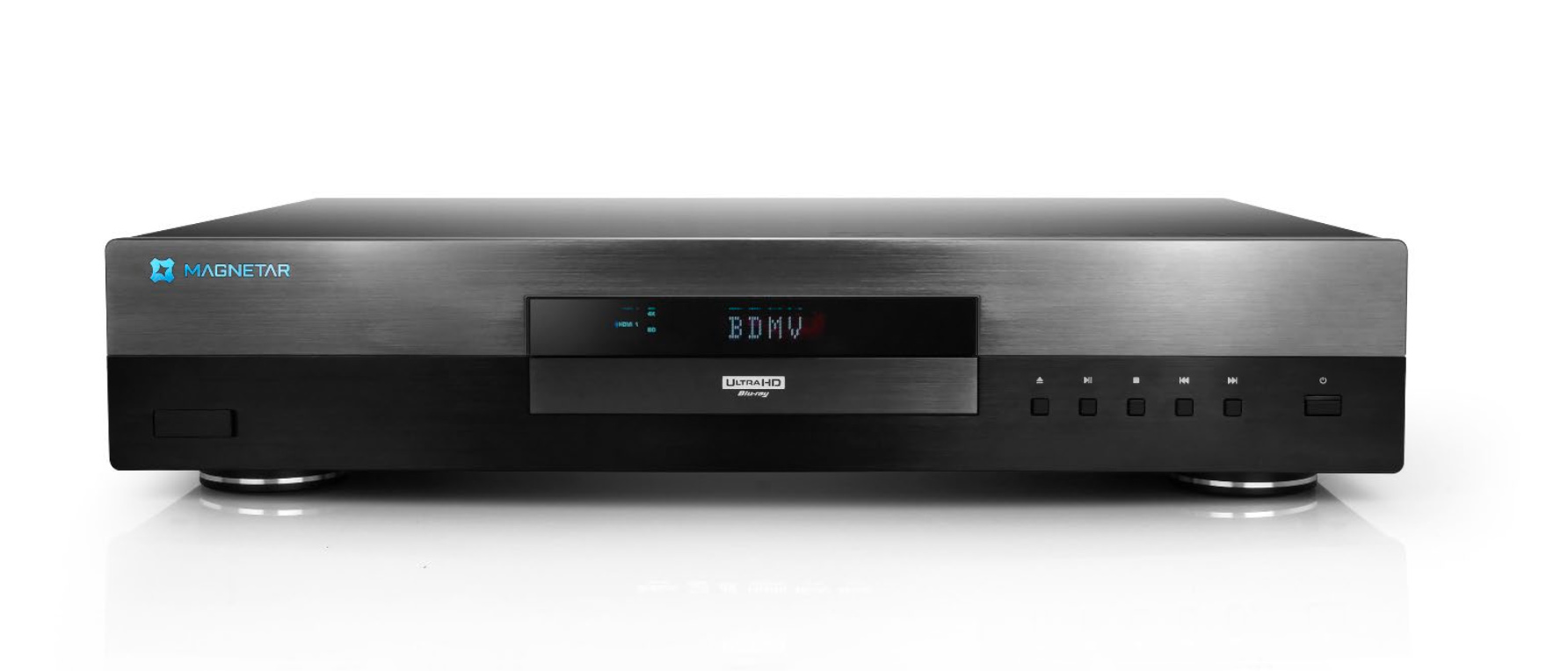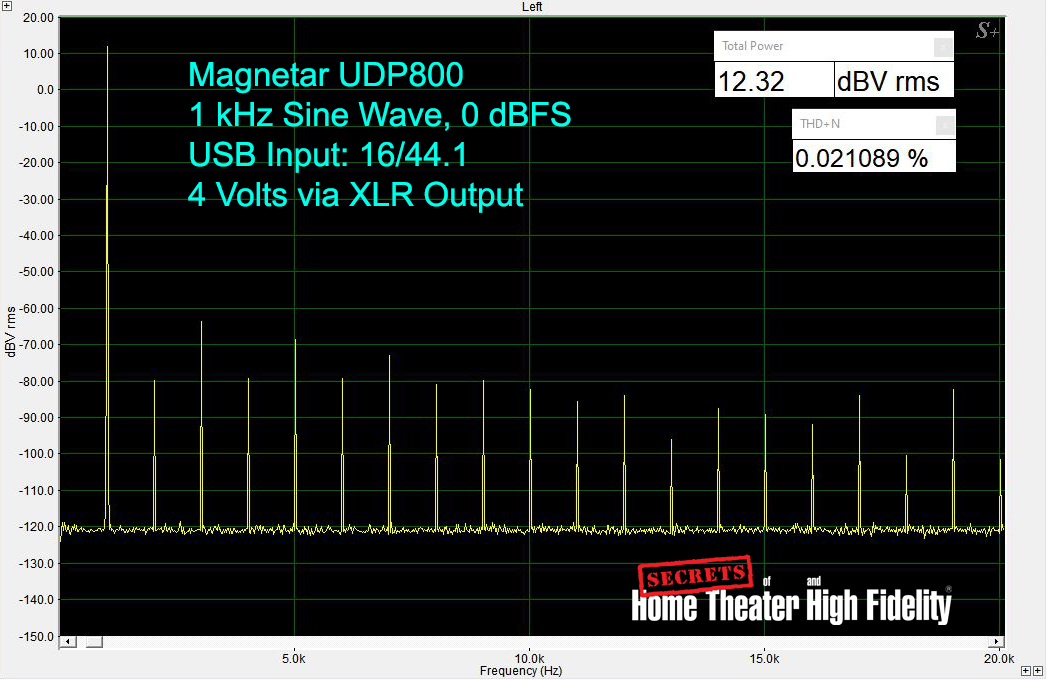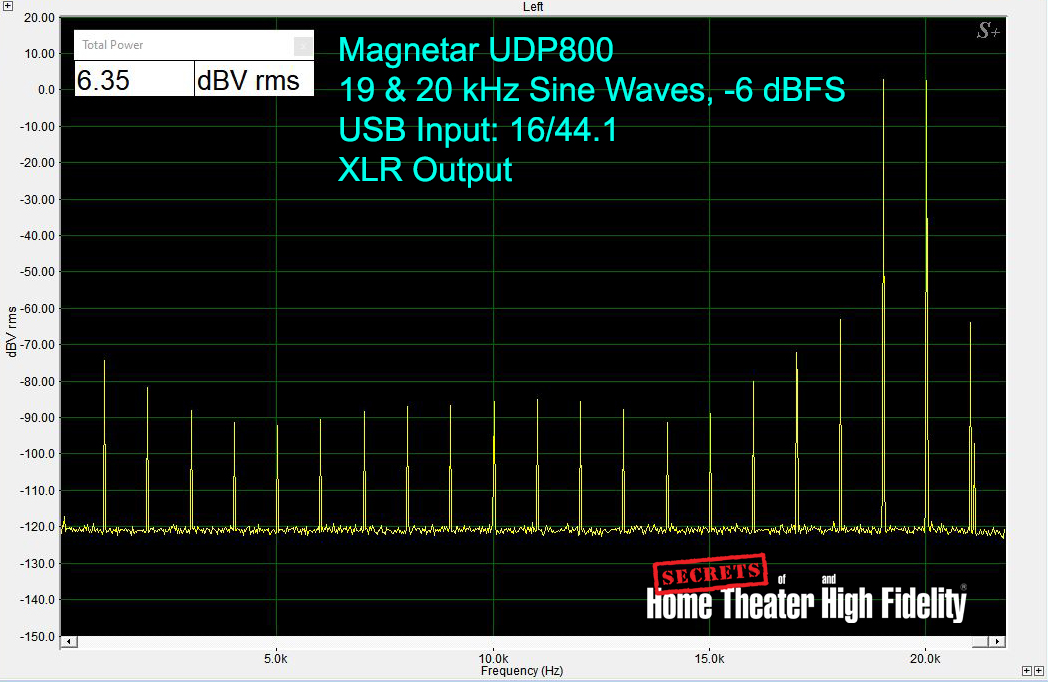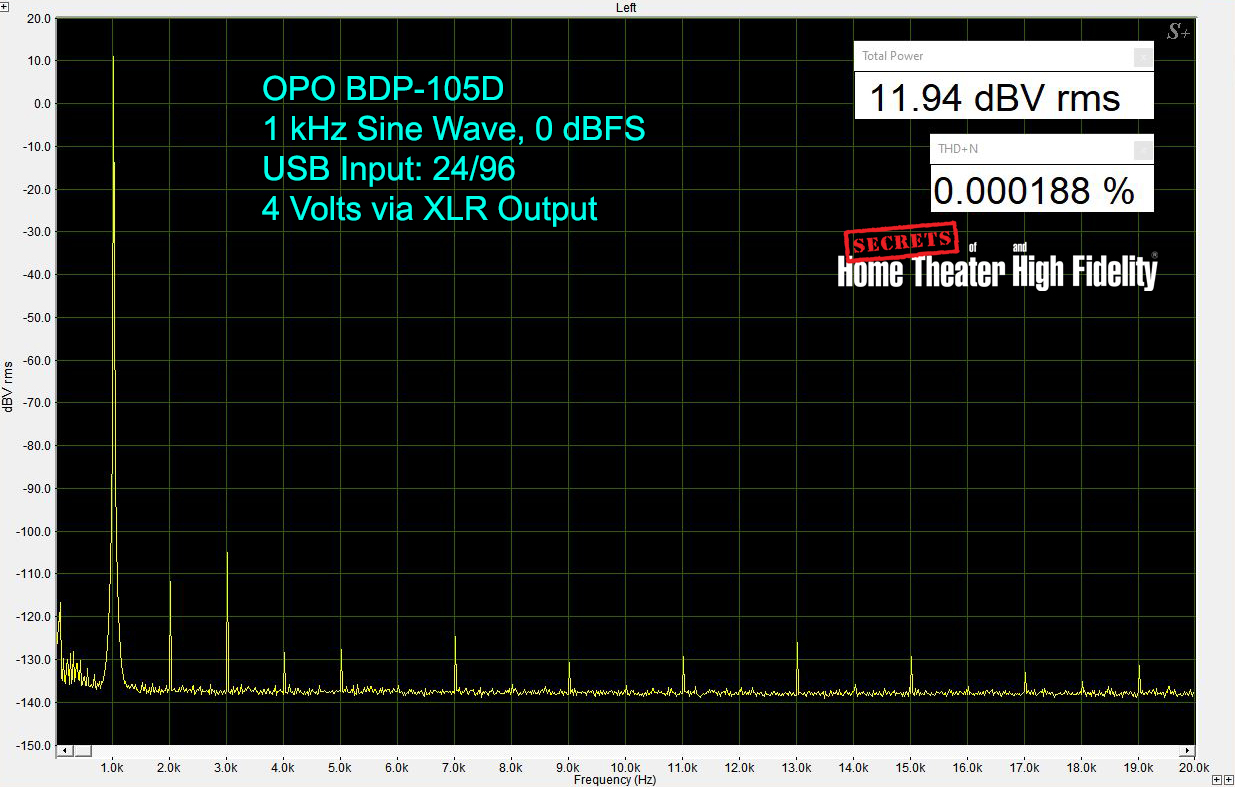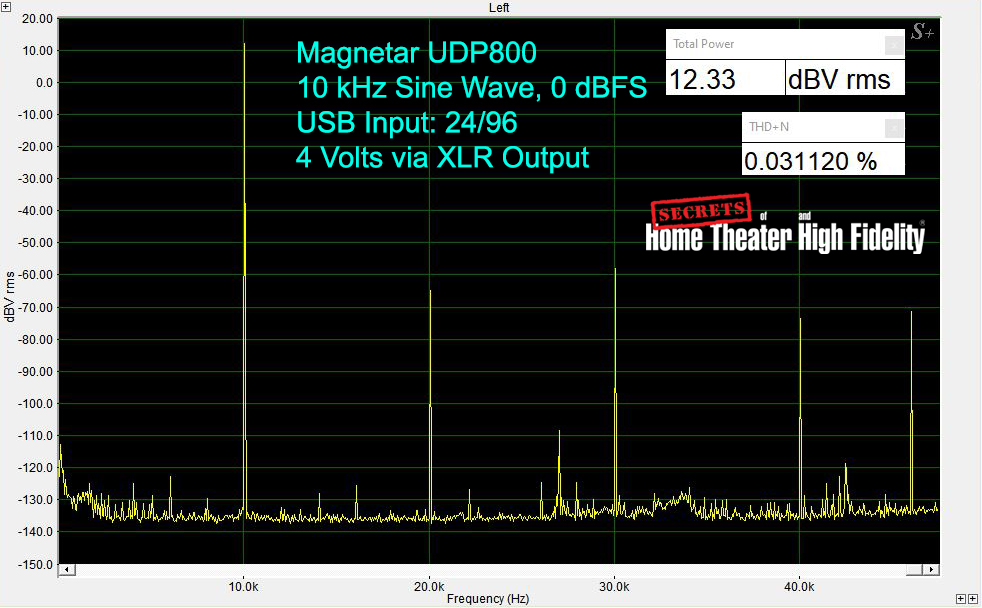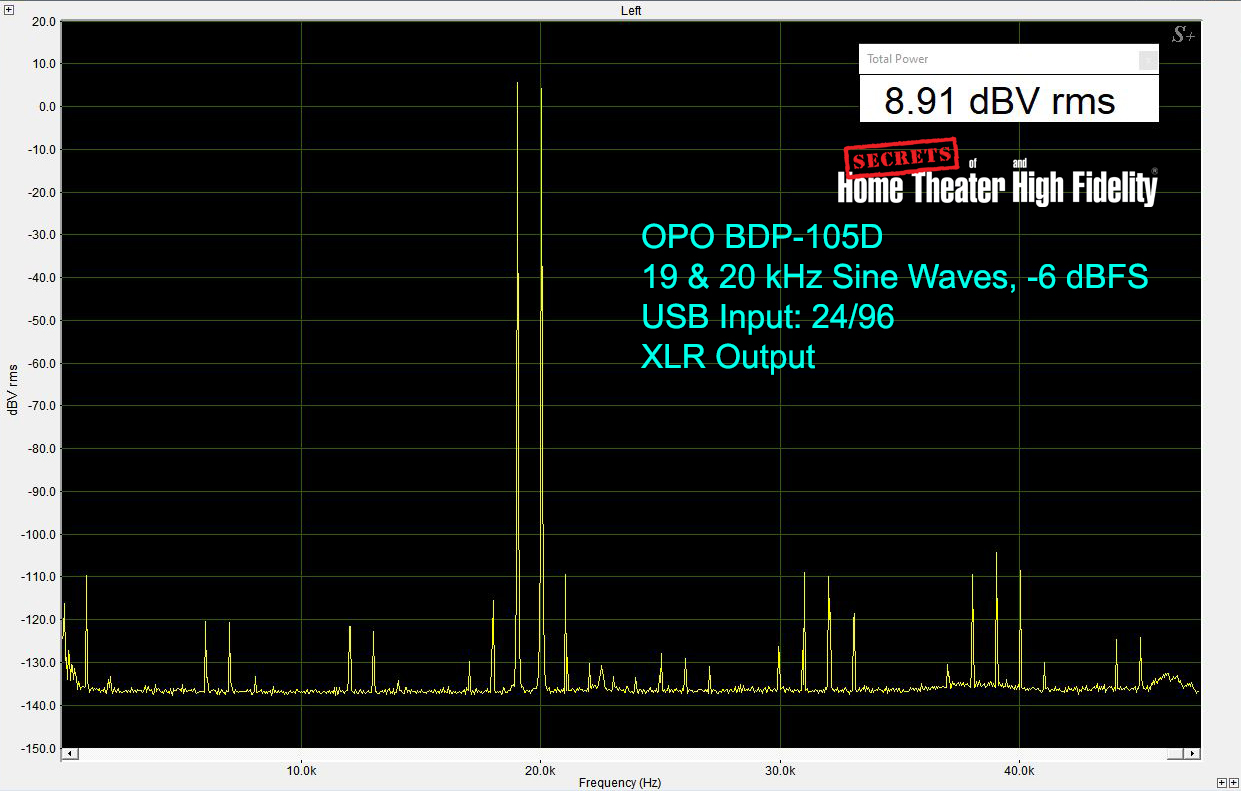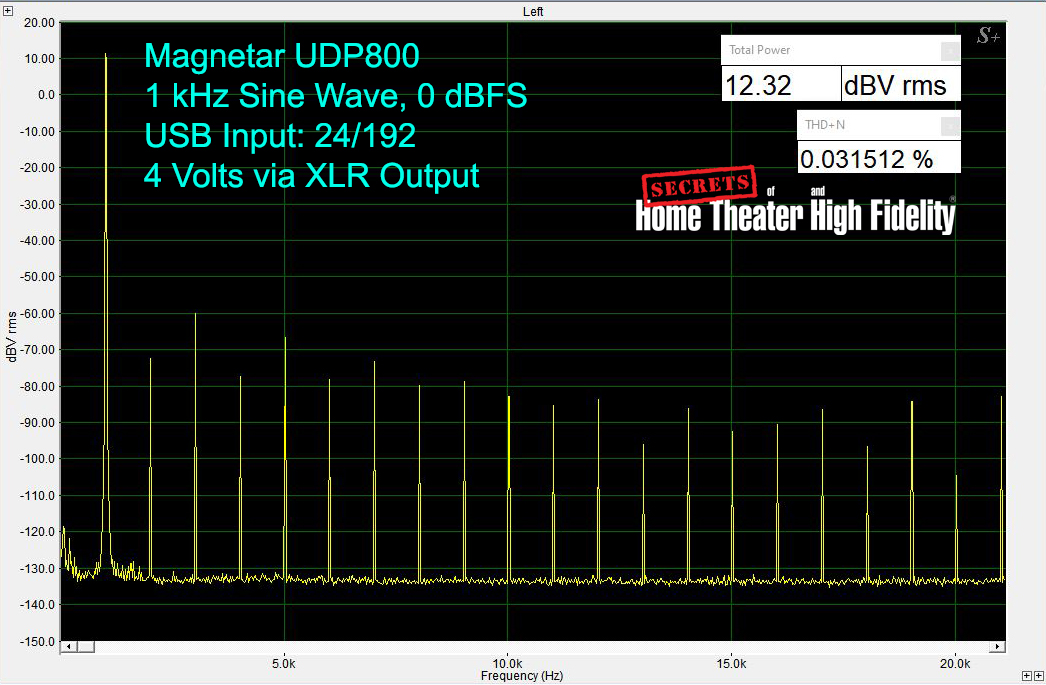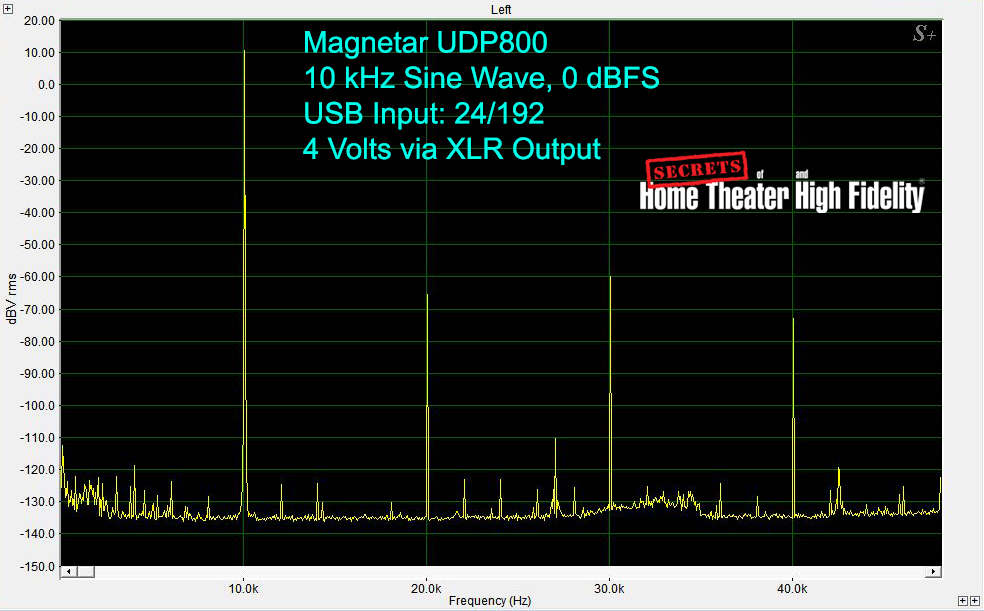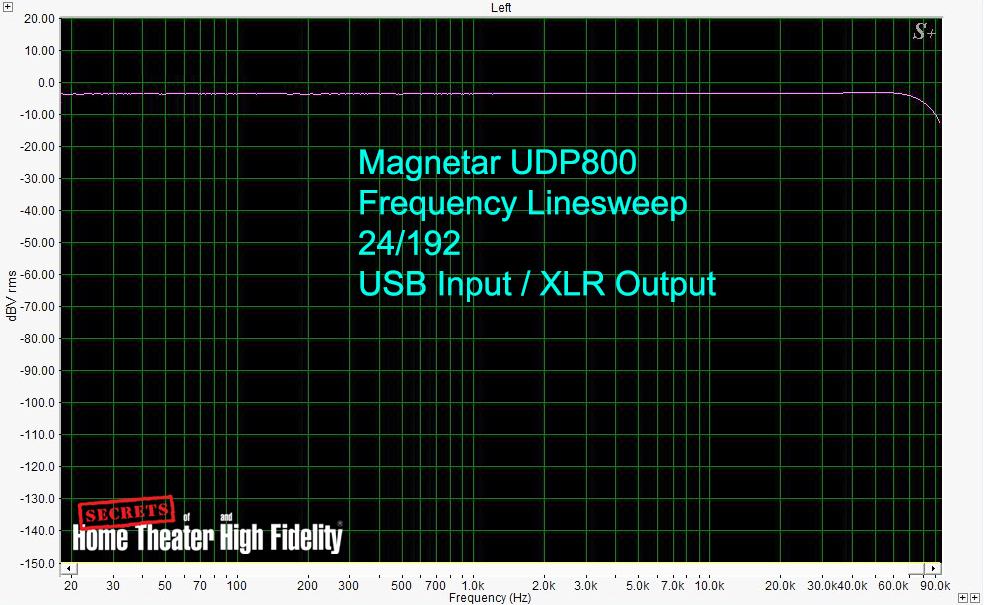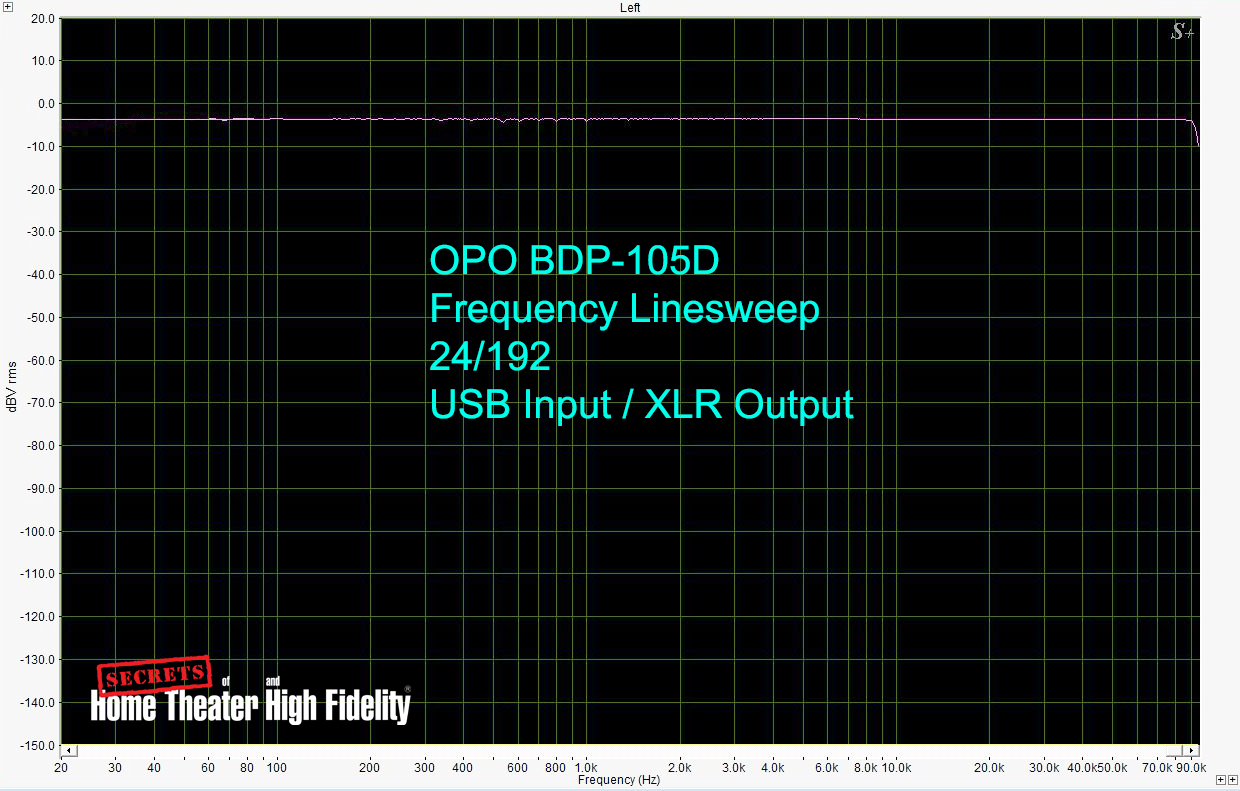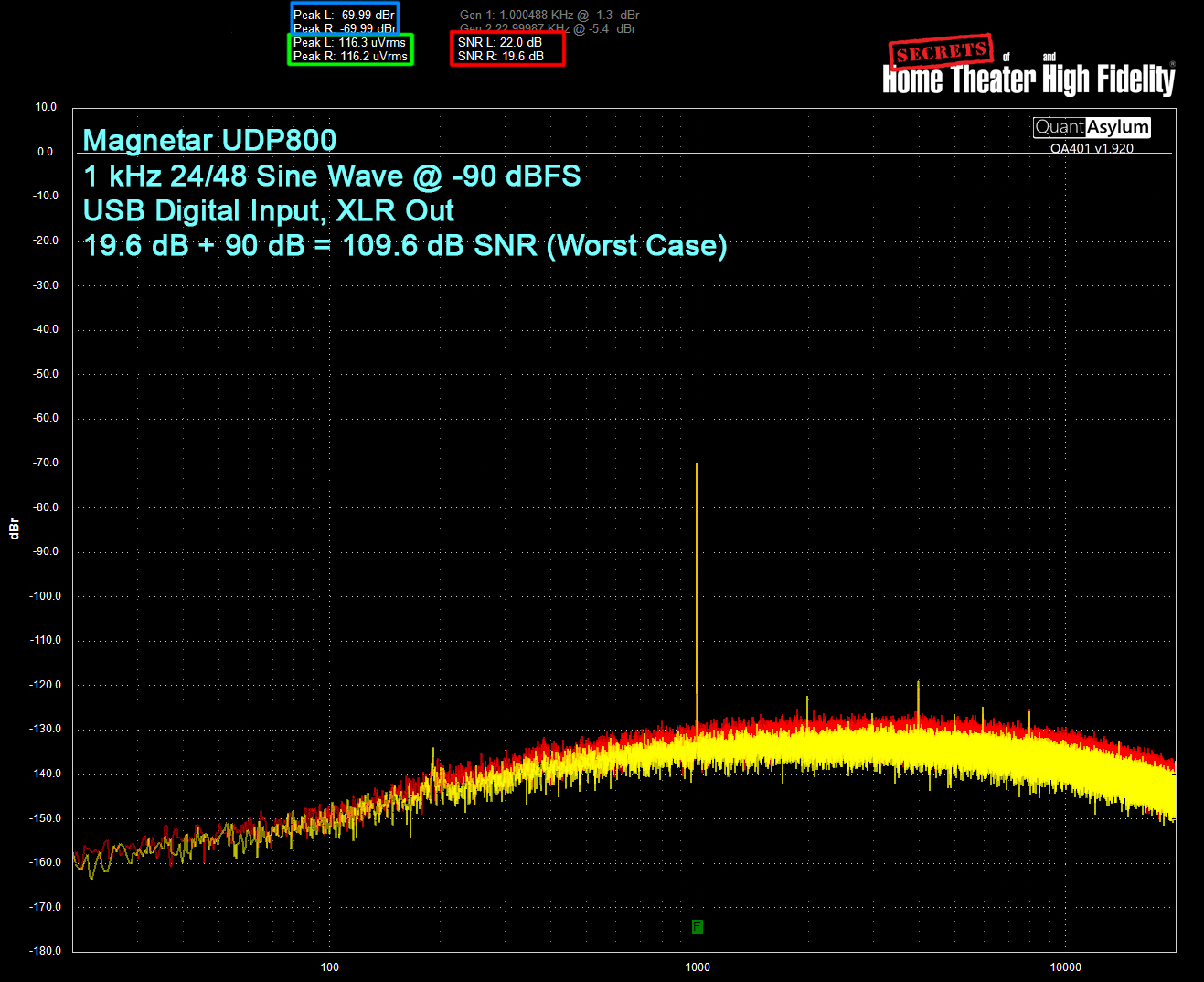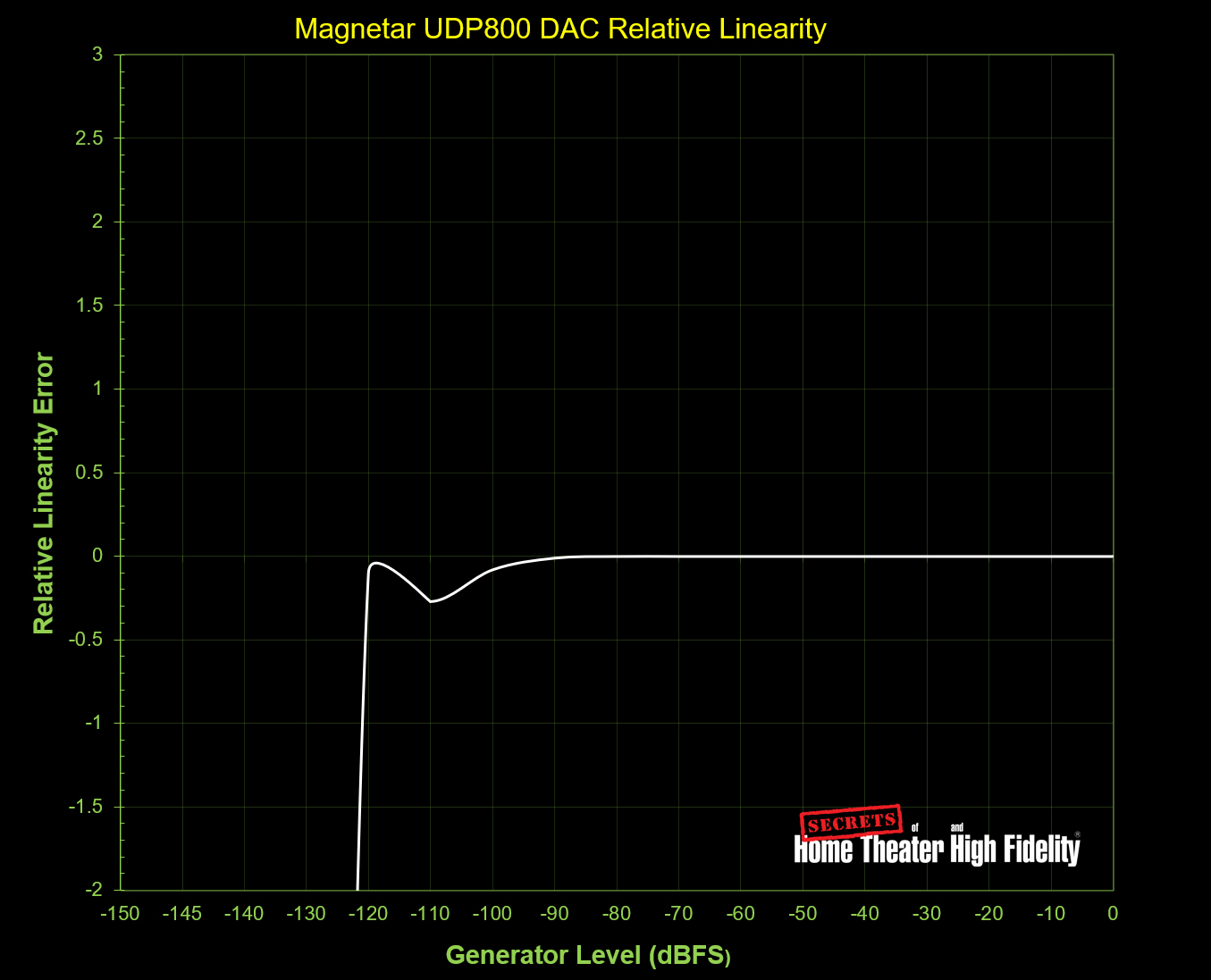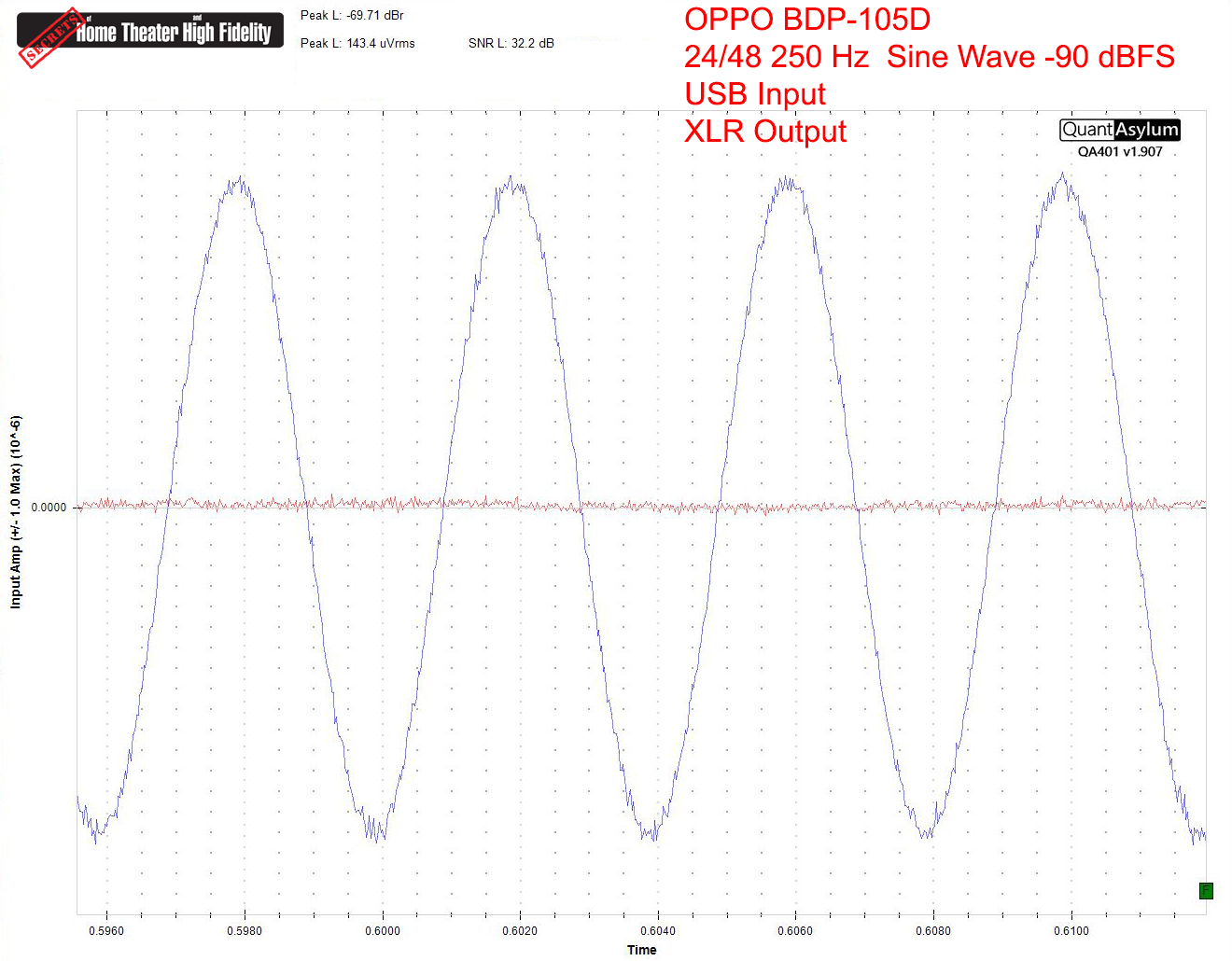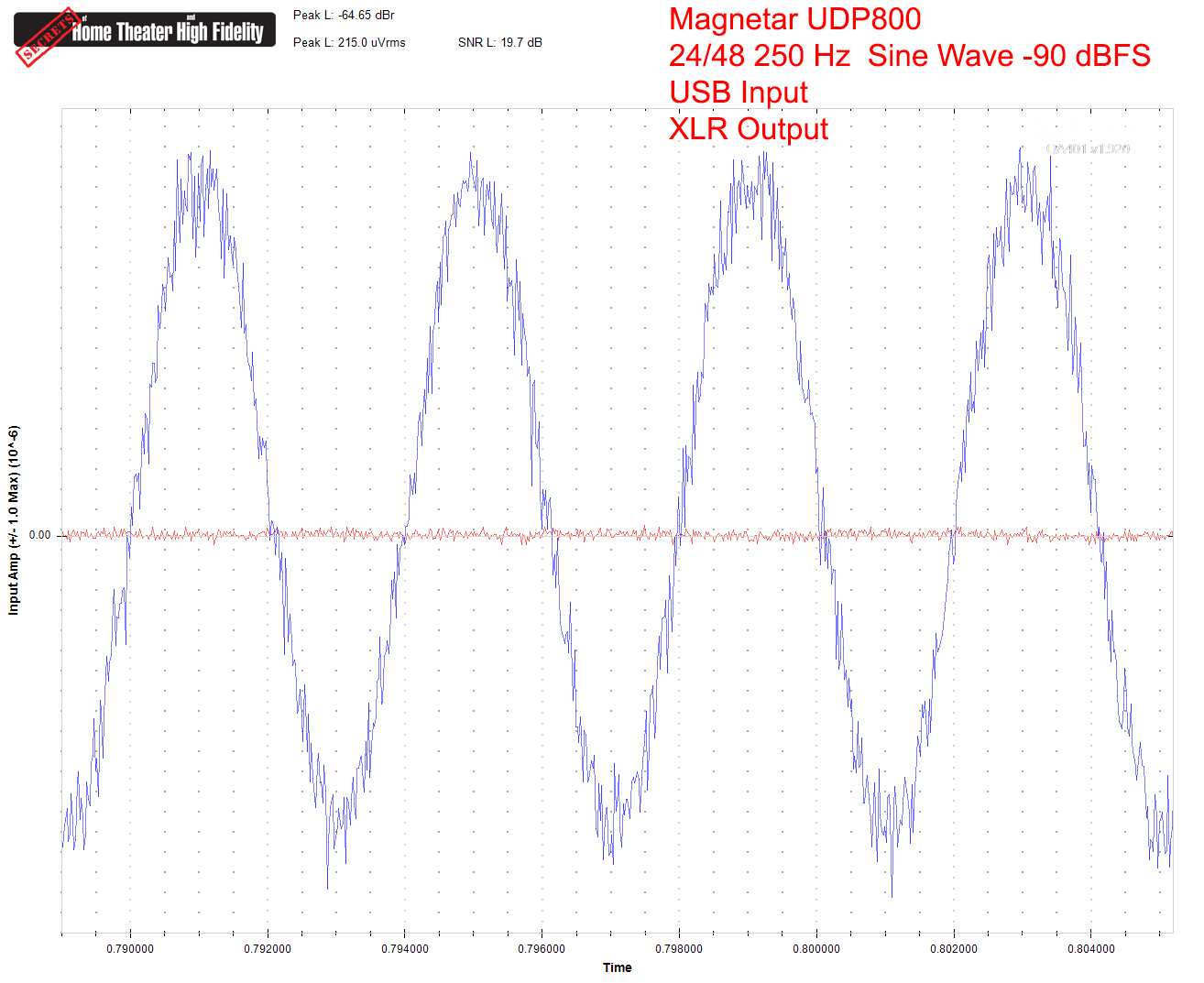Magnetar is an independent Chinese brand, and after using the Magnetar it’s clear that they were aiming at creating an Oppo-like player with similar features and specs. The Magnetar UDP800 is a universal player, something we just don’t see on the market anymore, other than the Reavon player I reviewed last year.
Magnetar UDP800 Universal Disc Player Highlights
- The Magnetar UDP800 is well-built and silent in operation.
- The built-in LED panel is easy to read but doesn’t provide much information.
- There are 2 HDMI outputs, one for audio.
- All discs I tried worked, including defunct formats like DVD Audio and the quickly sinking SACD format.
- Can be updated over the internet.
- Menus are easy to read and understand. They are very reminiscent of the Oppo series disc players, which was probably the design goal.
- The unit is attractive, and with its two-toned black color front panel, it should look good with other components.
- The manual is well-written and clear, with many diagrams.
- No multichannel analog outs, which would be nice with SACD.
- The remote is nearly unusable in a dark room due to the positioning of the button that lights up the remote, and the fact that it goes off way too soon to be helpful.
- No screensaver.
The Magnetar UDP800 is a solidly built player, that easily handled both new and old disc formats. It rendered Dolby Vision and HDR formats properly and, to the eye and ear, performed essentially identically to my reference Oppo BDP-203 player, long discontinued. The Magnetar UDP800 is not an inexpensive player, but it costs far less than a used Oppo BDP-203.
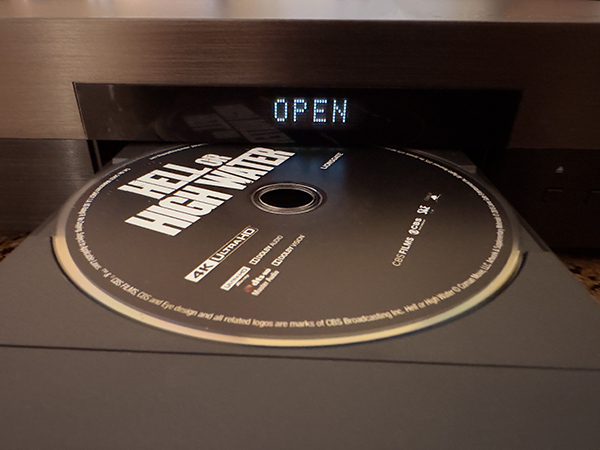
It’s a physically attractive player with a two-toned front panel and front and rear USB inputs for music files, and it should fit in well with any high-quality system.
My only real complaint is the remote which disappointed me. While the remote has an attractive design, the button that lights up the remote is in an odd place and users will have trouble finding it in the dark. Once you tap the light button, you only get a couple of seconds of light before you are in the dark again.
Universal disc players are a vanishing breed. With the end of the Oppo players, now costing a fortune used if you can find them, there are only a few players that can play just about any disc format you can throw at them. For audio and videophiles who have become focused on streaming, universal players may not mean much. But I and many of my fellow AV hobbyists have lots of discs that simply won’t play on more modern disc players.
The best universal player ever offered was a series of Oppo players. In 2009, OPPO introduced a “universal” Blu-ray player, BDP-83, compatible with DVD-Audio and Super Audio CD formats. Newer players added more compatibility, and the Oppo’s became a sort of standard for high-end, highly versatile disc players. Oppo discontinued all their players in 2018, citing the growth of streaming. I have and continue to use 2 Oppo BDP-203 players that support 4K, standard 1080P Blu-ray, DVD, SACD, DVD Audio, and more.
It gets worse. Slowly but surely almost everyone who made high-quality disc players has bolted the market. Denon and Marantz left in 2014, Yamaha stopped producing players in 2017, Pioneer, Cambridge Audio, and Samsung were gone in 2019. Panasonic still produces a high-end player, and Sony, a longtime leader in high-end disc players, serves the market with a few lower-end products.
So, there’s a big opening here for this Magnetar player, and in this review, we’ll see if it’s up to the task of equaling or beating the best of the late, lamented Oppo players.
Disc types supported:
UHD Blu-ray, Blu-ray, Blu-ray 3D, DVD-Video, DVD-Audio, AVCHD-SACD, CD, Kodak Picture CD, CD- R/RW, DVD±R/RW, DVD±R DL, BD-R/RE
Output Analog audio:
Stereo
Independent stereo analog audio:
XLR balanced output, RCA output Optical/coaxial audio: up to 2 channels /192kHz PCM, Dolby Digital, DTS HDMI audio: up to 7.1 channel /192kHz PCM, up to 5.1 channel DSD, Bitstream HDMI video: UHD/p24 1080/1080p / 1080I / 720p / 576p / 576I / 480p / 480I
Analog audio characteristics
Frequency range: 20HZ-20khz (-3dB ~ +0.05dB), Signal-to-noise ratio: & GT:
120dBr
Total harmonic distortion + Noise: & LT: 0.00018%, Output level:
(RCA) 2. l±0.2Vrms. (XLR) 4.2±0.4Vrms Dynamic range: AGT: 120dB, Channel separation: & GT: 120dB
General specifications
Power supply:
AC 100-240V ~, 50/60Hz
Power:
30 W (Standby: 0.5W in energy saving mode)
Size:
430 mm (17 inches) x 300 mm (12 inches) x 90 mm (3.5 inches)
Weight:
8kg (18 lbs.)
Working temperature:
41° F – 95° F 5° C – 35° C, Working humidity: 15% – 75%
MSRP:
$1599.00
Website:
SECRETS Tags:
Universal disc player, 4K Blu-ray, DVD, CD, SACD
The UDP800 is a solid-looking player, weighing in at 18 pounds. Magnetar describes the player as follows: “The UDP800 provides a brushed aluminum front panel, in a solid, highly rigid metal chassis designed to greatly improve audio and video performance, with a distinctive double layer chassis structure thickened to 1.6mm and a 3mm steel plate under its base, reducing vibration and generated noise during playback. Major internal components, including the tray mechanism and power supply, are independently shielded to reduce external magnetic fields.”
The UDP800 supports HDR10, HDR10+, and Dolby Vision with BT.2020/BT.709/BT.601 color space support. HDR to SDR conversion is also supported. The UDP800 can convert low-resolution video sources up to 4K 50/60Hz (3840 x 2160) resolution.
The audio side of the player is equally well equipped, and it can decode DSD64/128, multi-channel DSD64, and 192kHz/24-bit PCM formats with AIFF, ALAC, APE, FLAC, and WAV audio file support. The UDP800 supports Dolby TrueHD and DTS-HD Master Audio, as well as Dolby Atmos and DTS- X.
Magnetar describes the analog converter as follows:
“For Pure Audio playback, UDP800 specifically adopts a 4-layer PCB circuit board where each channel is designed with independent wiring. Two independent Burr-Brown PCM 1795 DAC processors are used for two-channel D/A decoding, processing the left channel and right channels respectively. And high-quality MUSES8920 OP-AMP for audiophile sound quality. The UDP800 comes with stereo XLR gold-plated balanced terminals and stereo RCA gold-plated unbalanced outputs. Pure audio mode function is available to bring excellent sound quality to audio lovers.”
However, I’d like to see analog outs for all the SACD channels, something the Oppo players offered, but there are just stereo analog outs on the UDP800.
The UDP800 was nicely double-boxed and was wrapped in a cloth bag, like the unboxing experience of the Oppo players. It’s a nice touch, and it protects the player in shipping.
The UDP800 has an ethernet jack, and the manual says it can handle updates, so I plugged the player into my network, and yes, a firmware update was available. After about 2 minutes the UDP800 finished and turned itself off. I had to turn it back on manually but confirmed the firmware had updated.
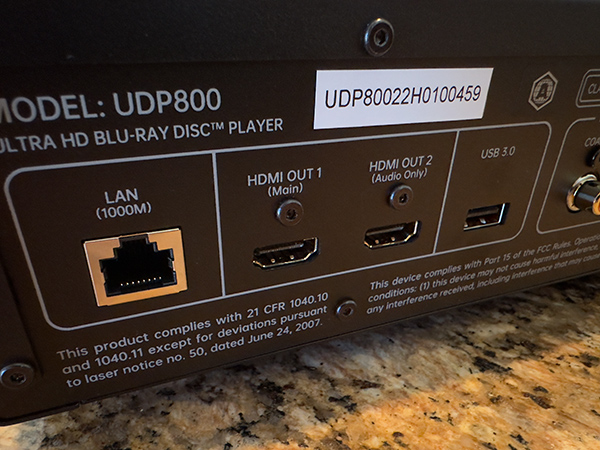
It wasn’t a feature-rich firmware update, but it fixed some muting behavior and slowed down the loading of 4K discs to make the player’s loading mechanism quieter. I personally didn’t think it was loud, to begin with. The update also seemed to fix an audio anomaly I saw on one disc, which I’ll discuss later.
The setup was not difficult with just an HDMI cable to my processor and a power cable. I added the above-mentioned network cable to connect the player to my home network.
The UDP800 has digital outs, coax, and optical. Besides an extra HDMI for audio out, there are 2 RCAs (left and right) and XLRs for balanced analog connections.

Overall, I had a good experience. Movies, both Blu-ray 1080p and 4K movies played just fine. The HDR and Dolby Vision switching was automatic and seemed to function well.
Visually, I saw no difference between the Magnetar playback and watching the same movie on my Oppo 203. My projector doesn’t pass Dolby Vision, so I checked playback on my LG 4K TV, and all looked fine there too.
Movie audio seemed a bit cleaner on the Magnetar when compared to the Oppo. I listened to several movies and a concert in 4K. The difference was slight, but my notes reflected slightly better separation of instruments and voices, and just a shade more treble. The UDP800 passed Atmos soundtracks perfectly.
My listening was through an Emotiva RMC1-L and an Anthem AVM90. Speakers that were part of the change were Focal Chorus Speakers, Ohm Walsh, and KEF LS-50 speakers.
Movies I watched in 4K included Interstellar, Star Trek The Motion Picture, Dunkirk, and Death Wish. Blu-rays included Death Hunt, Hitchhiker, and Marooned. I threw in a few DVDs, and they played with no issues. Same for some old DVD Audio discs. When I watch I’m looking for evidence of ringing where deep black meets bright backgrounds, blacks that are black rather than gray, and detail in clothing. Of course, when watching a movie there are many elements in the equipment chain. The disc player, of course, the quality of the original mastering, and the playback both on a light emitting screen or on a more passive projector. I could not see that the Magnetar was adding any spurious artifacts.
On the audio side, I checked out some of the 2L discs and was pleased with their multichannel sound playing their SACD layer. They also sounded great when they offered Blu-ray audio with Atmos.
Discs included Lux, with the Trondheim Solistene, and Remote Galaxies. All have high bit-rate audio, which seemed to be flawlessly decoded by the Magnetar.
I listened both from the HDMI and analog outputs. The analog outputs are stereo only. I felt the analog output sound from the Magnetar and Oppo were virtually identical, except the Oppo has the advantage of analog outputs for 7.1 surround. To make things equal, I only listened in stereo.
Listening via HDMI, I felt the Magnetar was just slightly superior where high frequencies were concerned. The placement of instruments and objects seemed slightly sharper and high frequencies seemed slightly more extended. I noticed this when listening via PCM or bit streaming, where my processor decoded the sound.
It’s fair to point out, that with the processor decoding the bitstream signal via HDMI, the Oppo and the Magnetar should sound the same. However, I felt there was still a subtle audible difference in favor of the Magnetar.
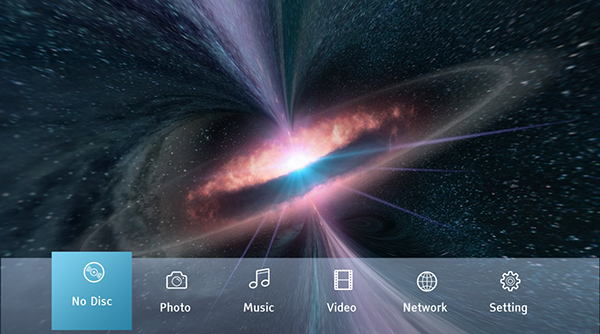
As mentioned, the menus look similar to the Oppo players. In some cases, they look better, with more modern graphics. The setup menus are almost identical to the menus on my Oppo 203.
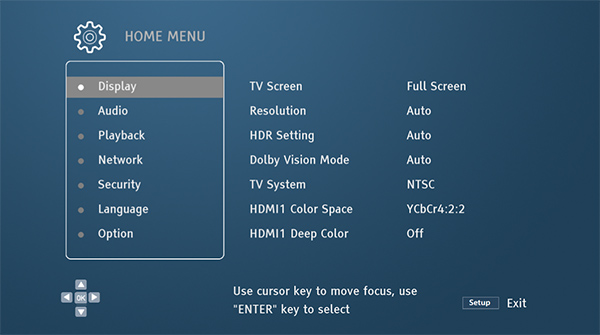
I encountered 2 glitches with the player.
The first issue was the audio on the 4K disc of Death Wish became garbled for about a minute and a half starting at 2:33. I checked the same disc on 3 other 4K players and heard no problem. But the error always happened when the disc was played on the UDP800. Just after those tests, I saw an offered firmware update. I updated the player, and that fault went away. It played the disc perfectly, and I’ve seen no similar problems again with that or any other disc.
Secrets Sponsor
The second issue was playing FLAC files, either from a USB device or over a network. The specs say FLAC files are supported. I put a few on a USB stick and plugged it into the player. I got a warning that the file type was not supported. I had the same result trying to access FLAC files over a network. No joy. We have another UDP800 on test with the Secrets staff, and that player worked well with FLAC files. I emailed the Magnetar team, and they said they’ve seen the issue too, and suggested I restart the player by pulling the power plug, reinserting it, and trying again. I did that and suddenly it was playing FLAC files without issue. It has continued to do so through several power cycles.
Other than that, my experience with the UDP800 was excellent.
A word about the remote control. Although well-built and attractive, I found it very frustrating to use.
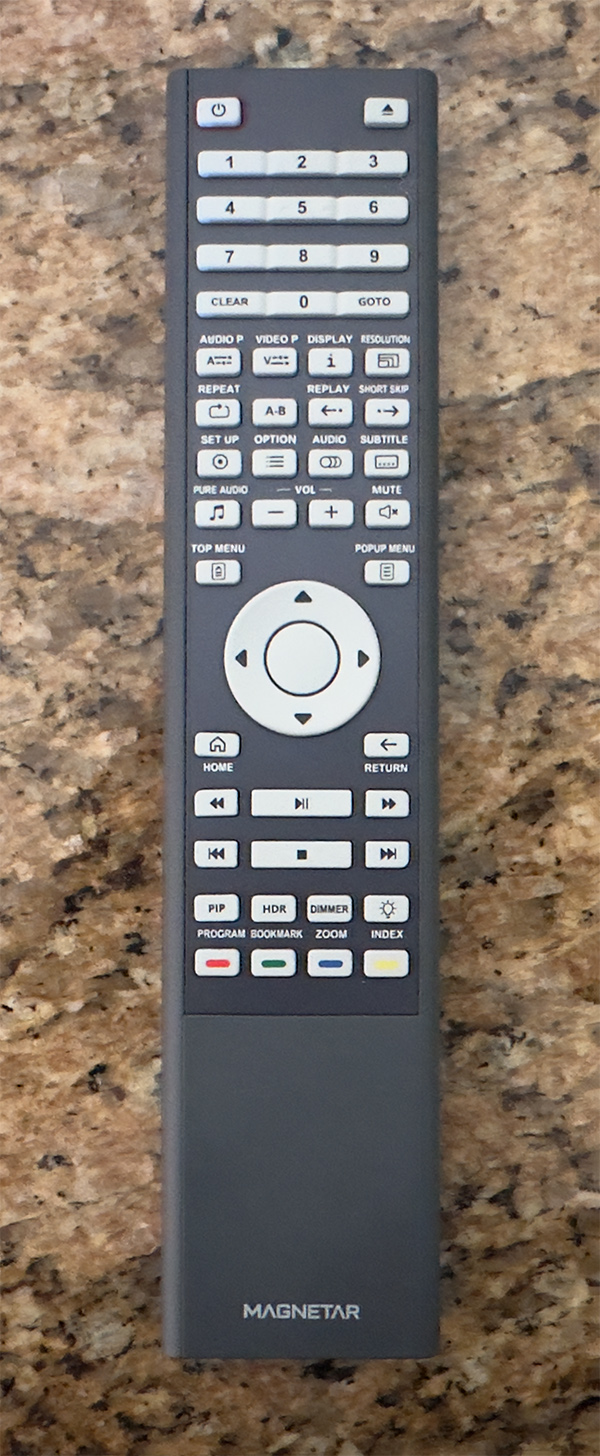
Unlike the Oppo family of remotes, which turn the backlight on when you pick them up, the UDP800 requires a button to be pressed to turn on the backlight. It’s in an odd spot, and until you learn where it is you’ll have to hunt for it, which is no fun in a darkened theater. It’s a small button, and not easily distinguishable from the other buttons on the remote. When the light comes on it only stays on for a couple of seconds, so while I was searching for the appropriate command, the light would time out. These are simple things to fix, and I hope Magnetar improves on this.
Measurements and Analysis by Carlo Lo Raso.
For THD and frequency response tests, I used my Lynx E22 professional soundcard teamed with SpectraPLUS measurement software. For sine wave analysis along with SNR measurements, I used the Quantasylum QA401 analyzer and its associated software.
When measured with a voltmeter the following values were observed at the outputs when a 1 kHz, 0 dB test tone was applied: 1.97 Volts at the RCA outputs and 4.1 Volts at the XLR outputs. This was with the UDP800 digital volume set to maximum.
Secrets Sponsor
Measurement test tones were loaded onto a USB thumb drive inserted into the front USB jack and played through the UDP800 menu system. I cross-checked the USB results with test tones burned to a DVD disc and the results were as near as to be identical.
The player’s stereo DAC chipset consists of 2 Texas Instrument/Burr-Brown PCM-1795 chips (one per channel) that output to both the balanced and unbalanced outputs. There are no multichannel analog outputs on the UDP800. The following measurements relate to the stereo analog outputs of the Magnetar UDP800.
Here we have the first of the 16-bit 44.1 kHz tests. Beginning with a 1 kHz test tone at 0 dBFS gives us a reported THD+N of just under 0.0456%. This was using the RCA outputs and at 2 VRMS, and we see several harmonic spurs throughout the spectrum along with some modest ground noise. The 2nd order harmonic is 87 dB below the fundamental while the 3rd order harmonic is 69 dB below the fundamental. These and several other harmonics will be audible to one degree or another.
Repeating the same test using the XLR outputs at 4VRMS gives us a THD+N of 0.0211% along with better ground noise rejection. Unfortunately, the harmonic spur makeup of the spectrum remains largely the same as with the unbalanced measurement. This is less than ideal for a disc player marketed with an elevated stereo analog capability.
For comparison, this is the same test conducted on the OPPO BDP-105D via its XLR outputs. Notice the almost complete lack of distortion spurs with the 2nd and 3rd harmonics appearing at 125 and 120 dB below the fundamental. THD+N registers at a minuscule 0.00016%.
The remainder of the measurements were taken from the balanced XLR outputs.
A 16/44 10 kHz sine wave at 0 dB produces a THD + N of 0.0135% and a very clean spectrum. Although there is a 2nd order harmonic at 20 kHz that is 78 dB below the fundamental, it will be inaudible.
The 19 and 20 kHz test tones at -6 dBFS produce poor results with 2 major sidebands, both being only 65 dB below the fundamental tones. Several other harmonic and distortion spurs appear throughout the spectrum at elevated levels.
Moving to the 24-bit /96 kHz tests, a 1 kHz test tone at 0dBFS gives us a THD+N of 0.0257%. The 2nd and 3rd order harmonics register at 90 and 74 dB respectively below the fundamental tone. The spectrum looks almost identical to the 16-bit/44 kHz test with just a lower noise floor.
Here is the same test conducted on the OPPO BDP-105D. Much cleaner with far lower THD+N and all harmonic spurs are below the threshold of audibility.
A 10 kHz tone of the same bit depth, sampling, and output level shows a THD+N of just over 0.0311%. The second-order harmonic (20 kHz) checks in at 76 dB below the fundamental, with the third-order harmonic (30 kHz) coming in at 70 dB below.
The 19 and 20 kHz dual-tone test at 24-bit/96 kHz with a -6 dBFS level essentially mirrors the poor performance of the 16-bit/44 kHz measurement. The largest sidebands are both at 65 dB below the fundamental.
Here is the same 19 and 20 kHz dual-tone test on the OPPO BDP-105D. Again, much cleaner spectra overall with distortion spurs and harmonics below the level of audibility.
Above are the same three series of tests but done at 24-bit/192 kHz. The results for them are almost the same as the 24-bit/96 kHz tests.
Here are the results for a frequency line sweep performed at 24-bit/192 kHz. The frequency response of the magnetar UDP800 is flat only out to about 60 kHz before it begins to gradually roll off. It is down by 4 dB at 80 kHz and down by 10 dB at 96 kHz before dropping off. Not quite as good as OPPO below, but significantly better than the Reavon UBR-X200 measured previously.
The same frequency line sweep performed on the OPPO BDP-105D Digital shows a response that is flat out to about 90 kHz before dropping off.
SNR measurements were done using the QuantAsylum QA401 Analyzer. Using a -90 dB 1 kHz test signal, we determined the digital SNR (A-Weighted) of the Magnetar UDP800 to be 110 dB. Converted to bits that means the UDP800 can resolve 18 bits. On the top of the spectrum, you see the SNR of the UDP800 and then see the signal-to-noise of the left and right channels relative to the -90 dB tone (red box). We want the ratio of the full-scale signal to the noise, so we add 90 dB.
The above graph shows the relative line linearity performance of the UDP800. The PCM-1795 DAC architecture shows minimal amounts of deviation beginning at -90 dBFS in level. A larger deviation (-0.27 dB) occurs at -110 dBFS with the signal getting lost in the noise floor at an early -120 dBFS.
This is a time-domain plot of a -90 dBFS 250 Hz sine wave applied to the OPPO BDP-105D on the left channel. It is included here as a reference. The self-noise of the QA401 spectrum analyzer in time-domain mode is shown on the right channel as it is grounded. While obviously not a perfectly smoothly rendered sine wave, it is still incredibly complete for such a low signal level. This is the best result we have gotten so far from any disc player, and it is better than several standalone DACs; hence it’s used as a reference point. The BDP-105D has a signal-to-noise ratio of 122 dB without weighting which is what is shown. It had 124 dB with A-weighting which we used in the SNR measurement. As with the SNR, what is displayed here is relative to the waveform’s amplitude of -90 dB so what is shown is 32 dB. The signal level is 143 uVRMS.
Here is the same plot for the Magnetar UDP800. The amplitude of the signal is a little higher at 215 uVRMS. You can see how the Magnetar’s plot is more ragged than the OPPO’s even though it has a slightly higher signal level. Its SNR, relative to the -90 dB amplitude of the test tone, is lower at 19.7 dB.
The final spectrum is the Julian Dunn J-Test for jitter at a sampling rate of 44.1k samples/sec. The test is close to an 11 kHz tone at –3 dBFS down and is a small, low-frequency square wave that creates activity in the PCM data which makes it harder for the clock recovery circuit to produce a clock without some phase noise. I used a 16-bit test tone generated by REW introducing the square wave at an amplitude of the smallest level possible for 16-bit data which is called the least significant bit. An excellent explanation of the J-Test and the spurs the test produces can be found here.
John Atkinson identifies the spur’s amplitude and frequency of the J-Test in the absence of jitter. John then comes up with an innovative line to be placed on a spectrum of the analog output of a DAC box which is reproducing the J-Test. Any spur below the line is inherent in the test and not from the DAC box.
As can be seen, the jitter of the Magnetar UDP800 is largely below the limits of the test. The number of small residual spurs between the lines are most likely jitter spurs from the UDP800 and are so low as to be of no consequence.
Summary:
The objective results of the analog stereo audio output of the Magnetar UDP800 are pretty much in line with the previously tested Reavon UBR X200 player as both these units share the identical DAC architecture. Distortion products and harmonic spurs are much higher than expected across the board, to the point that these artifacts would be audible in regular playback and “flavor” the sound. Whether this is by design or not I cannot say. The DAC chipsets used in this player are older designs that do not compete with newer silicon from the likes of ESS, AKM, and Cirrus Logic. Even with the use of the TI/Burr-Brown PCM-1795, the THD and SNR results obtained here are well off the quoted specs from the TI/Burr-Brown spec sheet.
I do know that when the same tests were conducted on the discontinued OPPO BDP-105D, the results were far cleaner with much lower distortion and it’s results are simply provided here as a point of comparison.
The obvious question then becomes “Well, can you really hear a difference between the Magnetar and the OPPO using the analog outputs?” Listening to the Magnetar player in isolation through its XLR output through my 2-channel system, one finds nothing to immediately note as objectionable. It essentially sounds fine. However, when compared back-to-back in a level-matched situation with the OPPO BDP-105D, while playing the same content and switching inputs via remote on the fly, differences become readily apparent. Even from my listening chair, I noted that the Magnetar player sounded distinctly darker and less transparent and clean than the OPPO to my ears. It was particularly apparent in listening to classical music, the OPPO consistently had a quieter background and better clarity within the sounds of the instruments in general. It, therefore, comes down to a question of subjective preference. Does one prefer a cleaner more transparent sound or a warmer slightly darker sound? There is no real wrong answer here.
If one was to use this Magnetar player strictly with an HDMI connection to an A/V receiver or processor, then I find absolutely nothing to complain about as its functionality and video playback was excellent. If one is looking for a reference 2-channel audio disc player, then I recommend an audition to make sure you like the sound quality.
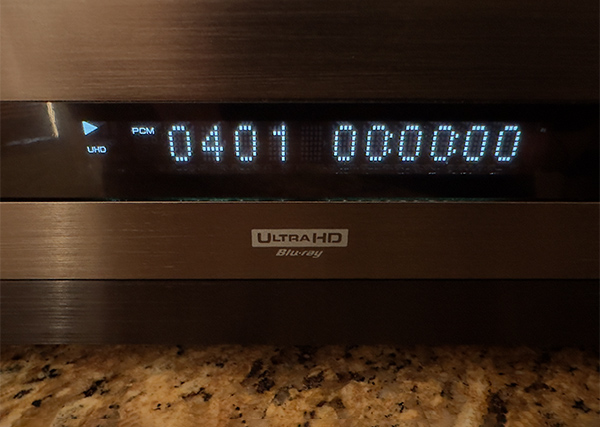
The Magnetar UDP800 is an excellent player, and overall, a nice substitute for any of the Oppo players. It’s not an exact feature-for-feature match. For example, the Oppo 203 that I have has full analog surround outputs for movies or SACDs. The Magnetar has stereo RCAs. The rest of the audio output is handled by the HDMI jack. On the other hand, the Magnetar has a very solid disc loading mechanism, preferable to the one on my Oppo, which is not bad either, but the Magnetar seems more robust.
- Excellent, solid build quality.
- Video roughly on par with my reference Oppo 203, audio just a slight bit better.
- Menus are easy to navigate and obvious in their functions and seem based on the Oppo menus.
- Remote needs a lot of work. It’s built to a very high standard, but not easy to use in the dark.
- LED display has little useful info.
- Would prefer multi-channel analog outs for movies and SACD players.
This is tricky. At $1599.00, the Magnetar is not an inexpensive player, but it has more features than any other currently offered 4K Universal Player. Actually, the only player that comes close is the Panasonic DP-UB9000. It sells for about $1100 but doesn’t have SACD playback, which many audiophiles will demand. Sony still makes a few players that will play SACDs, which is after all a Sony invention, but the players are clunky and not exactly high-end.
There are used Oppo players out there on places like eBay, but they generally command high prices, usually higher than the cost of this new Magnetar. So, for the audiophile who wants a universal player, this is a worthwhile buy. I’ve also reviewed another challenger to the Oppo throne which was the Reavon UBR X-200 which also offers universal support of formats. It is priced at a similar $1699, but I don’t think it is quite as well built as the Magnetar.



